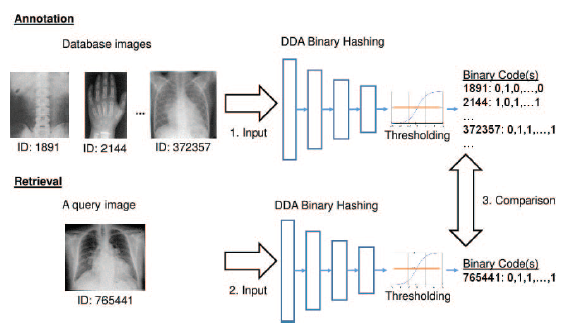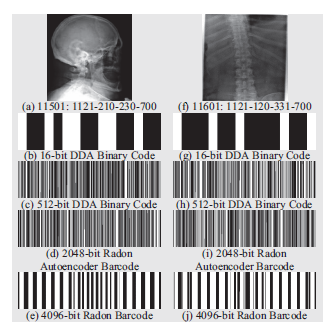July 2016
The retrieval of medical images plays a crucial role in various applications, including diagnosis, research, and treatment planning. Content-Based Image Retrieval (CBIR) techniques enable efficient searching and retrieval of images based on their content rather than relying on manual annotations or labels. In this context, a recent study explores the application of Deep De-noising Autoencoder (DDA) for hashing X-ray images into binary codes without the need for class labels. The researchers propose a novel unsupervised training scheme that incorporates a dropout layer into the DDA architecture, leading to improved binary hashing performance.

The research introduces a new approach to train the DDA model without the requirement of class labels. By incorporating a dropout layer into the DDA architecture during the Unsupervised Fine-tuning step, the study achieves notable advancements in binary hashing performance. The dropout layer randomly sets a fraction of inputs to zero during training, reducing overfitting and enhancing the model’s ability to generalize. Experiments conducted on the IRMA dataset from ImageCLEFmed09 demonstrate the significance of the dropout layer, resulting in a reduction of the total retrieval error by up to 21.9%.
To streamline the implementation process, the researchers propose an alternative approach to constructing a deep autoencoder. They directly stack denoising autoencoders, eliminating the need for complex layer-wise pre-training. This simplification accelerates the model development process and facilitates the integration of deep autoencoders into the binary hashing framework. The stacked denoising autoencoders preserve the model’s ability to extract meaningful features from X-ray images, contributing to improved retrieval performance.
In addition to the dropout layer and stacked denoising autoencoders, the study introduces a novel method called Radon Autoencoder Barcode (RABC). RABC leverages Radon projections of X-ray images to generate binary codes. The binary codes obtained from the Radon projections, known as Radon Barcode (RBC), are further refined using a de-noising autoencoder trained on the Radon projections. This enhancement, combined with the 512-bit DDA binary codes, demonstrates improved retrieval performance.

The findings of this study shed light on the potential of Deep De-noising Autoencoders and related techniques for efficient Content-Based Image Retrieval, particularly in the context of large-scale image datasets such as medical images. The ability to hash X-ray images into compact binary codes without the need for class labels presents a promising approach for retrieving relevant images based on their content. This has significant implications for medical professionals, researchers, and healthcare systems that deal with vast amounts of image data, where obtaining labels for training can be time-consuming and expensive.
The utilization of Deep De-noising Autoencoders, incorporating a dropout layer, and the development of Radon Autoencoder Barcode (RABC) showcase the effectiveness of these techniques for hashing X-ray images into binary codes. The research provides valuable insights into achieving satisfactory binary hashing performance without the reliance on class labels. These advancements have the potential to revolutionize Content-Based Image Retrieval, offering more efficient and accurate retrieval of medical images, especially in scenarios where label acquisition is challenging. Future developments in this field can further enhance the capabilities of CBIR systems, facilitating improved medical image analysis, diagnosis, and treatment planning.
Additional details: Binary Codes for Tagging X-Ray Images via Deep De-Noising Autoencoders